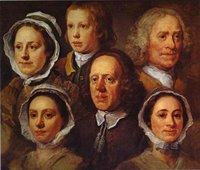 It’s tough to follow on after the heart-wrenching demise of Frisky the Goldfish (and now his successor, gone to both a watery and icy grave). So I thought I’d write today about servants, who I find far more fascinating than the folks upstairs in the drawing room in the labor-intensive regency household. Of course the best thing about servants, for a writer, is that they knew the household secrets and family dynamics better than anyone. I find it interesting, though, that so many regency-era writers get them all wrong, relying on vague ideas of what servants are like (and copying others’ mistakes).
It’s tough to follow on after the heart-wrenching demise of Frisky the Goldfish (and now his successor, gone to both a watery and icy grave). So I thought I’d write today about servants, who I find far more fascinating than the folks upstairs in the drawing room in the labor-intensive regency household. Of course the best thing about servants, for a writer, is that they knew the household secrets and family dynamics better than anyone. I find it interesting, though, that so many regency-era writers get them all wrong, relying on vague ideas of what servants are like (and copying others’ mistakes).
For instance, a female servant would never answer the front door, unless the household was quite poor and she was theonly servant. Neither would she wear a black dress and white cap–that was a uniform that came in much later in the century. Footmen, dressed in livery, were the servants in an aristocrat household who dealed with visitors and guests–status symbols for the family, since there was a tax on male servants. It was the fashion to hire men who were similar in appearance and height, rather like a team of horses (leading to some very interesting possibilities if you have a mind like mine). Female servants hauled coals, emptied chamberpots, and did other dirty work, while their male (and better paid) colleagues minced around in daft uniforms and wigs opening doors and presenting billets-doux on salvers.
For an interesting breakdown on servants and their duties, visit this page (and if you poke around on the site you can also find out how to become a gentleman’s gentleman), http://www.butlerschool.com/interesting_facts.htm.
For a feel of servants’ living and working quarters, take a virtual tour of the “downstairs” at The Regency Town House–it’s described as a time capsule, as it’s the basement of a house in Hove (near Brighton) that has been virtually untouched for almost two centuries. Restoration of the main house, at 13 Brunswick Square is also underway and the servants’ quarters are a couple of doors down at number 10.
 Another interesting servant-oriented stop on your next visit to England is Erddig, an historic house in North Wales, where the former owners (before it was taken over by the National Trust), bless them, didn’t throw away a thing for three centuries, including correspondence with their servants when the masters were away. This unusual family also had portraits painted of their servants and wrote poems in appreciation of them.
Another interesting servant-oriented stop on your next visit to England is Erddig, an historic house in North Wales, where the former owners (before it was taken over by the National Trust), bless them, didn’t throw away a thing for three centuries, including correspondence with their servants when the masters were away. This unusual family also had portraits painted of their servants and wrote poems in appreciation of them.
 A book written for the National Trust about Erddig by Merlin Waterson, The Servants’ Hall, is out of print but you can find secondhand copies online. The Erddig family tradition of staff portraits continued well into the 20th century; in this 1912 photo, each staff member whimsically holdsa tool of their trade (the cook, front row left, is holding a dead pigeon. No wonder they look embarrassed).
A book written for the National Trust about Erddig by Merlin Waterson, The Servants’ Hall, is out of print but you can find secondhand copies online. The Erddig family tradition of staff portraits continued well into the 20th century; in this 1912 photo, each staff member whimsically holdsa tool of their trade (the cook, front row left, is holding a dead pigeon. No wonder they look embarrassed).
The artist William Hogarth painted his servants’ portraits, too. Notice the age range, from a young boy to a middle aged man.

So what was it really like, to be in service? The servants themselves existed in a social heirarchy at least as complicated as that of the people Upstairs.You worked very long, hard hours for not much money, but it was a way, if you scrimped and saved, to make the upward trek into the middle-class. You might end up running an inn or a shop with your sweetheart of many years, if you’d saved up most of your wages and tips (a valuable addition to the low wages most servants earned). A manservant in the 1820s eloquently described his life: The life of a gentleman’s servant is something that of a bird shut up in a cage. The bird is well housed and well fed but is deprived of liberty, and liberty is the dearest and sweetest object of all Englishmen. Therefore I would rather be like a sparrow or a lark, have less housing and feeding and rather more liberty. A servant is shut up like a bird in a cage, deprived of the benefit of the air to the very great injury of the constitution.
Any good servant scenes in anything you’ve read recently? Have you ever wanted to write about servants?
Janet

Great topic, Janet. But you know I’m a sucker for this topic, since I wrote a romance about a scullery maid (well, a bookseller’s daughter who has come down in the world).
I’ve found the Robert Altman movie Gosford Park to be wonderfully helpful about servants — which is to say that anything I’ve learned from more scholarly sources has never contradicted it (it’s also a spectacular movie, IMO). I really want to read The Remains of the Day as well (though I think I’ll continue to avoid the Merchant/Ivory movie).
I also find the matched-footmen thing . . . uh, fascinating in a rather repellent way. And those comic-opera getups — like a parody of past styles.
I’m also fascinated by the forced intimacy of people and their personal servants. In THE SLIGHTEST PROVOCATION, my heroine knows that her maid is sleeping with the footman, and the maid knows a great deal about what’s going on between my h&h — with not much needing to be said. Add to that the fact that servants often wore their employers’ castoff clothing — offstage reality must have wandered into farce more times than it really wanted to.
Pam
Janet:
I’m not as interested in the servants except as secondary characters, unless they’re doing unusual or interesting jobs. For me, it’s a problem that they likely know everything that’s going on in the house, plus are worked to the bone.
Like Pam, I loved Gosford Park for the downstairs revelations (um, not to mention a certain Mr. Owen). And in the HBO miniseries Rome, they showed people having sex with servants present. I guess the servants (or, more likely, slaves) were regarded as non-humans, so weren’t important enough to dismiss during intimate moments. Weird.
Yes, great post, Janet. I’m intrigued by this topic also. Trying to put myself in the mindset of a person of the period, I always have trouble ignoring the servants. I can believe that some people truly went on with their lives as if the servants were not present, but I’m sure more sensitive souls recognized them as people with problems and hopes of their own.
At the same time I don’t have trouble imagining that servants in a well-run household becoming a sort of unusual extended family of the owners, perhaps taking pride in identifying with the family and their interests. That’s usually how I have portrayed them.
There’s a book called A TESTIMONY OF HER TIMES, Based on Penelope Hind’s Diaries and Correspondence 1787-1838. Penelope Hind was a rector’s wife who never had children of her own, but had a warm relationship with her servants and their children. And yet it seemed to me a certain distance was maintained. It was interesting.
Now I’m wondering if I should do more with servants in the future.
Oh, and a little addendum on the goldfish tragedy. We drove the 25 or so miles to the nice, small personal fish store (aptly named Friendly Fins), where they tested our water, declared it fine and sent us home with a new fish that so far is looking way livelier than its short-lived predecessor. I think Sparkly is going to make it (I do not make up these names, honest!)
No more pet superstores for us.
Elena 🙂
Oh yes, and it does bug me when writers get servants way wrong. OK, maybe I’m a Regency Nerd, but I was annoyed reading a NYT bestselling author’s book where the hero is on a first-name basis with his butler. I was awfully confused at one spot, as it wasn’t clear that this person whatever-his-name-was was the butler and not a personal friend of similar status to the hero.
Stuff like this is so easily checked!
Elena
At the same time I don’t have trouble imagining that servants in a well-run household becoming a sort of unusual extended family of the owners, perhaps taking pride in identifying with the family and their interests.
I think this was true to a certain extent, but there was also the sense of us (downstairs) against them (upstairs). English servants were quite often well-educated and literate (there are accounts of masters meeting their upper servants at art exhibits, for instance). While some servants were “lifers” there were also others who used their time in service as a stepping-stone to advancement. It was certainly in the masters’ interest to encourage the ideal of the faithful family retainer and the concept of each person knowing their place and keeping to it.
In the wonderful bio of Lady Diana Spencer (the more interesting, altho equally indiscreet 18th-century one), Improper Pursuits by Carola Hicks, there’s an account of Diana’s divorce proceedings where the servants seem to have bent over backwards to damn her. They were under oath, and it was the House of Lords, but even so there was a marked degree of enthusiasm in providing the lurid details (mud on one end of the sofa, hair powder on the other, fyi).
Janet
Much has been made of servants identifying with their employers’ fortunes. Of course it happened, but I suspect rather less often than pop cultural convention would have it.
One of my cherished reference books is a book called DOMESTIC ENEMIES:Servants and their Masters in Old Regime France. All right, it’s France, which doesn’t have the . . . warmth we’ve come to associate with Regency England. But it’s a very entertaining and detailed book, and the inspiration fro one of my characters, a cook, saying that “grifting is as much a part of a cook’s repertoire as a good Bechamel sauce.” I loved learning just how one could cook the account books while stirring the soup.
And of course, the French gave us the great smartass populist hero Figaro.
Another wonderful reference book is BELOW STAIRS: 400 years of Servants’ Portraits, Giles Waterfield and Anne French, taken from a stunning exhibition at the National Portrait Gallery, which I was lucky enough to see. (it has the Hogarth on its back cover).
Pam